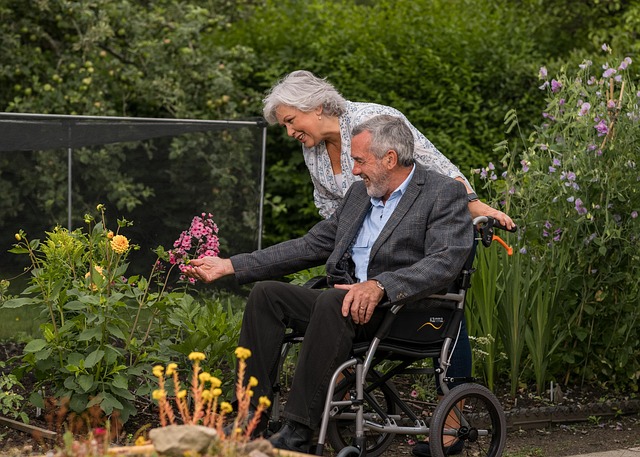
Person-centred care starts with a simple yet revolutionary concept: seeing the individual as a whole person, not just their care needs, their condition, or a task to be ticked off in the care plan. That means we, as carers, look past the medical or care needs and try to see the person in front of us. Each one of us has a whole life before we might need support, and we are still living it just as the individual we are looking after. Therefore, we as carers must take the time to discover their stories, what they value, and how they like things to be done, and then we can honour them as the unique individuals they are.
Let’s take a closer look at how we can make the individuals the centre of their care.
Getting to Know the Individual
Genuine person-centred care involves understanding the individual you look after as a whole person, which goes beyond reading their care plan, medical needs or being aware of their condition. You need to discover what makes them unique.
Living with the individual provides profound insight into their inner world, which can be challenging to see through time-limited visits. As a live-in carer, I can observe their tendencies. Are they naturally morning people or do they come alive later in the day? When they talk about something, what makes their face light up? What type of work did they do, and how do they feel about that period of life? Do they value established routines, or do they prefer improvisation?
Such details might seem minor, but they are profoundly impactful. Therefore, such knowledge shapes how and when we provide the support they need, starting with personal care and ending with the various activities they might be involved with.
Honouring Individuals’ Way of Living
At its heart, person-centred care means that you align with an individual’s desired way of life rather than only focusing on their current condition.
While one individual may have been a person who becomes energised in the evening, others require a cup of tea or coffee first before they begin their day. Some might like to have music in the background, while others need total silence. These habits or preferences aren’t just choices; they are a way for individuals to express themselves.
Even those of us who work on time-limited schedules should find a few precious minutes to get to know the individual and align our approach to their rhythm.
When we honour and respect their habits and preferences, it helps individuals to increase their value and their self-perception, which also helps to build trust.
Keeping the Individual at the Centre of Decisions
A core of person-centred care is to uphold and enhance independence whenever feasible. It doesn’t mean denying assistance when it’s needed, but instead finding the right balance between essential support and preserving independence. I’ve learned to resist the temptation to take over tasks that the individual can still manage — even if it takes more time or requires extra patience.
We can’t forget that the Mental Capacity Act emphasises that we should support the individual (client) to make their own decisions wherever possible. When they are unable to do so, decisions should still reflect their known values and preferences. Keep in mind that individuals are entirely entitled to decline, to alter their decisions, or to inquire about what is taking place. Despite individuals’ fluctuating capacity to make decisions, you can still find ways to include them in decision-making.
Choice continues to be essential, even when the options seem limited by physical or cognitive changes. The decision might be as simple as choosing what clothes to wear, what to have for breakfast or deciding to go out or to stay in. These small acts help to preserve autonomy and a sense of personal identity. Offering options throughout the day — rather than assuming preferences — can make a real difference to a person’s dignity and self-worth.
The key to encouraging independence is allowing someone to take on complex tasks, even if they are at risk of struggling or failing. Such an approach requires thoughtful risk assessment and ongoing observation. But the psychological benefits of maintaining skills and independence often outweigh the risk of minor setbacks.
Adapting to Each Unique Individual
Here’s a surprising fact: a method that is highly effective for one individual may be entirely unsuitable for someone else. That’s why universal care frequently misses the mark. Person-centred care demands adaptability and imagination. Carers should treat standard care plans as starting points for essential structure — not rigid rules. Stay alert and be flexible in your approach based on what you learn about each person.
Styles of communication vary widely. Specific individuals value clear, detailed explanations of your actions and the reasons behind them. Others may find this overwhelming and prefer quiet, instinctive support. Some people rely on visual cues to understand what’s happening, while others respond more positively to tone of voice or gentle physical prompts. Some enjoy conversation during care tasks, while others find it intrusive — especially during personal care. Recognising and responding to these preferences demonstrates respect for their boundaries and enhances comfort.
It is essential to stay observant and flexible. What helps a person feel safe and at ease one day might not work the next — and that’s completely normal. Being truly person-centred means remaining sensitive to these subtle shifts and responding to them with care.
Creating Genuine Human Connections and a Supportive Environment
At its core, care is about human interaction. We, as carers, must fulfil the tasks and provide the medications, but the personal relationships developed are every bit as vital as the work itself. Those moments when you share a laugh, listen to someone’s stories, or sit together in silence — these aren’t optional extras to squeeze in when time allows. They are the heart of meaningful care.
When individuals feel genuinely seen, heard, and valued, their entire experience of care transforms. They’re more likely to trust you, to speak openly about their needs, and to approach each day with a greater sense of confidence and optimism. And this doesn’t only benefit them — it also brings deeper purpose and satisfaction to your role as a carer.
The physical environment plays a decisive role in person-centred care. Living and working in someone else’s home means recognising that their space reflects their identity. I pay close attention to the objects they treasure, the lighting they prefer, the temperature they find most comfortable, and the corners of the home where they feel most at ease.
Creating a nurturing atmosphere goes beyond physical comfort — it’s about emotional security too. That means safeguarding individuals’ privacy, upholding confidentiality, and making sure they feel safe expressing their needs, concerns, or discomforts. The home should remain unmistakably theirs: a familiar, personal space — not a clinical setting where care happens to take place.
Making It a Living Practice
Person-centred care isn’t a one-time setup — it’s an ongoing commitment to truly understanding and responding to the individuals we support. It’s about more than routines or checklists. It’s a way of working that honours individual identity, preferences, and dignity in everyday interactions. This approach means noticing the small but meaningful details, adapting when something isn’t working, and recognising that each care plan belongs to someone with a rich story and unique needs. Care, when grounded in this awareness, becomes a shared human experience — not just a service.
Since adopting this mindset, my role as a live-in carer has changed. Tasks have transformed into opportunities for connection, active listening, and supporting a person’s sense of self. This approach requires emotional presence and flexibility, but it fosters deeper trust and authentic partnerships. When care is genuinely person-centred, it promotes confidence and comfort, even as needs evolve. It shifts the emphasis from simply managing decline to supporting a life still full of meaning.
Finally, being person-centred is about more than following a plan — it’s about tuning in. When we stay open, responsive, and respectful of individual preferences, we create the conditions for dignity, ease, and authentic connection.
Person-centred care isn’t just a technique — it’s a belief in the ongoing value of every person. As a live-in carer, I have the privilege of putting that belief into practice every day, shaping care that meets people not just where they are, but for who they are.
Sharing is caring
